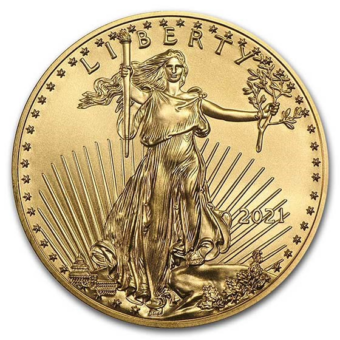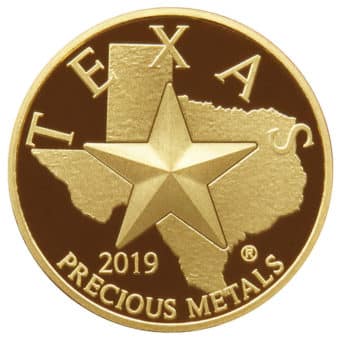The Gold Trail: A Daily Journey Through the Week's Market
Monday - 9.18.23: In early U.S. trading Monday, gold and silver prices have seen a slight increase, with markets awaiting the key FOMC meeting this week. While December gold rose by $1.80 to $1,948.00, December silver increased by $0.034 to $23.42. The FOMC meeting, scheduled from Tuesday to Wednesday, is anticipated to maintain the U.S. monetary policy, though a hawkish stance is expected
Tuesday - 9.19.23: Gold and silver prices experienced a modest rise in early U.S. trading on Tuesday, influenced by a weakening U.S. dollar index and rising crude oil prices. As December gold increased by $3.40 to $1,957.00, December silver went up by $0.117 to $23.615. Trading remains cautious in anticipation of the FOMC meeting set for this week, with many expecting a consistent U.S. monetary policy but a more hawkish approach.
Wednesday - 9.20.23: Gold and silver prices remained relatively stable in early U.S. trading on Wednesday, with traders closely watching the conclusion of the two-day FOMC meeting occurring later in the day. Market volatility is expected to rise following the FOMC statement and Federal Reserve Chair Powell’s subsequent press conference. December gold was marginally higher, and December silver also saw a slight increase.
Thursday - 9.21.23: Gold and silver prices experienced a significant drop in early U.S. trading on Thursday following the conclusion of the two-day FOMC meeting, which ended with a more hawkish tone than anticipated by the marketplace. December gold and silver were both down. This decline is a reaction to the hawkish stance from the FOMC meeting and Fed Chairman Powell’s statements, shifting market focus from the timing of rate cuts to an acceptance that rates will likely remain higher for a longer period.
Friday- 9.22.23: Gold and silver prices experienced gains in early U.S. trading on Friday, with silver reaching a two-week high and gold seeing a moderate corrective rebound from this week’s selling pressure, following a monetary-policy-hawkish FOMC meeting. Meanwhile, mixed movements in Asian and European stocks and a more hawkish stance from the Federal Reserve have created a shaky environment for U.S. stock indexes. The ongoing United Auto Workers union strike is impacting businesses nationwide, dampening overall risk appetite. In international updates, the Bank of Japan maintained its ultra-loose monetary policy, but the continuous weakening of the Japanese yen against the U.S. dollar is raising concerns in the marketplace.
Defying Predictions: The Resilient Economy Amid Recession Warnings
The U.S. economy, despite numerous leading indicators signaling an impending recession, has yet to conform to these predictions. The Conference Board's index of leading economic indicators has been in decline for seventeen consecutive months, hinting at a possible economic downturn. This index, a composite of ten leading indicators, is designed to foretell economic accelerations or slowdowns, several months in advance. The persistence and depth of the decline in this index typically signify an upcoming recession, and yet the economy continues to show resilience, with the Conference Board even projecting a real GDP growth of 2.2 percent in 2023. The Federal Reserve's projections are more optimistic, foreseeing a soft landing and dismissing the significant chance of a recession, contrasting with the gloomier outlook from earlier predictions. Nonetheless, the economy currently is not in recession, showing signs of strengthening and growth acceleration, defying the persistent recession forecasts.
Auto Industry on Edge: The Broad Economic Ripple of the UAW Strike
The ongoing strike by the United Auto Workers (UAW) union against major automakers Ford, General Motors, and Stellantis is anticipated to have widespread repercussions. The strike, initially affecting three assembly plants, could result in lower spending in communities where workers are striking due to reduced wages. This strike also has the potential to disrupt supply chains, impacting parts suppliers and eventually car buyers due to diminished vehicle availability and potential price increases. Although the current projected impact on economic growth is minimal, at a 0.2% reduction in fourth-quarter GDP, prolonged strikes could induce more significant ramifications, particularly in areas heavily reliant on car manufacturing. There are concerns that a protracted and intense strike might influence automakers’ future investment decisions and could potentially reshape the industry, especially during a crucial transition to electric vehicle production.
Anticipated Fed Rate Cuts in 2024: A Potential Catalyst for Precious Metals
Rick Rieder, the Chief Investment Officer of Global Fixed Income at BlackRock, anticipates the Federal Reserve will commence reducing interest rates in the latter half of 2024, predicting a possible end to the current cycle of rate hikes meant to control inflation. The Federal Reserve has already paused rate hikes twice this year, maintaining a range of 5.25% to 5.5%, the apex since 2001, but hints at a possible increase before year-end are also present. Rieder's projections could imply significant ramifications for precious metals prices. Generally, lower interest rates can bolster precious metal prices as they typically move inversely to interest rates, and the expected rate cuts can potentially make metals like gold more appealing to investors seeking value preservation amidst softer economic conditions and subdued yields in other asset classes.
Gold Defying Dollar Strength Amid Peaking Global Rates
Gold showed strength despite the prevailing robust U.S. dollar and high bond yields, as major central banks decide to maintain their current interest rates, signaling investor concerns over potential global economic distress. Central banks worldwide seem to hold rates high to manage inflation, as a period of global policy tightening appears to be reaching its zenith. The market's response reflects a belief that central banks are pausing rate hikes more as a precaution against a potential global growth halt rather than a reaction to subdued inflation. This sentiment has resulted in the strengthening of the dollar and a rise in U.S. gold futures and spot gold, with investors viewing gold as a refuge against economic instability and market uncertainties.
Gold’s Prospective Shine: A Vision of Rising Value amid Monetary Turbulence
Despite enduring high consumer prices forcing central banks globally to escalate interest rates, the gold market maintains a bullish long-term outlook, mainly due to broader market trends and increased money supplies reducing purchasing power. Eric Strand of AuAg Funds pointed out that the prolonged trend of declining money velocity has now reversed, thanks to relentless money printing by central banks and the growing balance sheets, leading to the latest price inflation. Strand remains optimistic about gold, foreseeing new all-time highs possibly by early 2024, as markets anticipate an end to rate hikes and a resumption of central bank easing. He also emphasized the value in the gold mining sector, which presents a lucrative opportunity for investors, with gold miners offering great value, lowered debt, high dividends, and increased M&A activity, positioning the sector for substantial gains.
Banks’ Diverging Predictions for Gold Prices in 2023
Various banking institutions have provided their projections for gold prices at the close of 2023, illustrating a spectrum of expectations. Bank of America foresees a closing price of $1,923, while The Royal Mint predicts $1,859.90, and TD Securities anticipates the value at $2,100. Meanwhile, more conservative estimates are provided by Fitch, Société Générale, World Bank, and Credit Suisse, ranging from $1,550 to $1,650. The average expected gold price for 2023 is gauged to be $1,859.90, with the peak price predicted to touch $2,025. Thus far, in 2023, gold prices have seen a surge of 10%, standing at $1,924.95 as of September 11, 2023.
Impending Shifts: Lawrence Lepard's Insight on Future Gold Valuations
Lawrence Lepard, the founder of Equity Management Associates, expressed his perspective on the current standing of gold companies and the gold price during a discussion at the Precious Metals Summit 2023. Lepard attributed the unsatisfactory performance of gold companies in comparison to gold prices to margin compression. He raised concerns over the continuous inflation of all-in-sustaining costs amidst a projected five-year gold price that is about $200 lower than the current rate, warning of diminishing margins if the trend persists. Contrary to the prevalent $1,700 forecast, Lepard anticipates gold reaching between $3,000 and $10,000 an ounce, asserting the market has reached its nadir and expecting a favorable rebound in gold company valuations. He emphasized the significant implication of the enduring strength of gold prices despite the Federal Reserve's substantial increase in the cost of money, signaling a probable unsustainable approach by the Fed. Lepard predicts a market disruption within the next three to 18 months, forcing a reversal in policies and triggering a resurge in inflation and a consequential rise in gold value beyond $2,100.
Elevated Trajectory: The Fed's Sustained Hawkish Stance on Interest Rates
The Federal Reserve’s hawkish pause on rate hikes has been a subject of extensive market discussion and analysis. While a rate hike pause was anticipated, the enduring hawkish tone, indicating high-interest rates into 2024, created considerable upheaval in the financial markets. The Federal Reserve is poised to implement one more rate increase of ¼% this year, with projections indicating intentions to maintain the terminal rate above 5% throughout 2024. A significant revelation was the intended implementation of only two rate cuts in the upcoming year, contrasting with the expected four, suggesting that the cost of borrowing would remain considerably high, an insight that has had substantial repercussions on the financial markets, with U.S. equities experiencing a significant drop. Additionally, U.S. bond yields witnessed a notable spike, particularly in the 30-year government bond. Chairman Powell’s remarks confirmed a continued rigorous approach to attaining the 2% inflation target, affecting gold futures which, after an initial spike, saw a decline of 1.40%, highlighting the pervasive impact of the Federal Reserve’s revised stance on various financial components.
Next Week’s Key Events
MONDAY, SEPT. 25
- No economic reports are scheduled for this day.
TUESDAY, SEPT. 26
- 8:30 am: New Home Sales for August
Impact on Gold and Silver Market: A rise in new home sales may indicate economic growth and a healthy economy, potentially leading to stronger currency values and weaker gold prices. Conversely, a decline may increase the appeal of gold as a safe-haven asset. - 9:00 am: S&P Case-Shiller Home Price Index (20 cities) for July
Impact on Gold and Silver Market: A surge in home prices may reflect inflationary pressures, making gold and silver more attractive as hedge assets. A drop in home prices might suggest economic slowdown, potentially benefiting gold as a safety investment. - 10:00 am: Consumer Confidence for September
Impact on Gold and Silver Market: High consumer confidence often correlates with a robust economy, which might weaken the demand for gold as a protective asset. In contrast, low confidence might increase gold's allure.
WEDNESDAY, SEPT. 27
- 8:30 am: Durable Goods Orders for August
Impact on Gold and Silver Market: A rise suggests economic expansion, possibly leading to a decrease in gold and silver prices as risk appetites grow. A decline might imply an economic slowdown, increasing the demand for gold and silver as safe assets.
THURSDAY, SEPT. 28
- 8:30 am: Initial Jobless Claims for the week ending on Sept. 23
Impact on Gold and Silver Market: An increase in jobless claims can suggest weakening economic conditions, potentially boosting gold and silver as safety assets. A decrease may strengthen the economy and weaken gold and silver demand. - 8:30 am: GDP (revision) for Q2
Impact on Gold and Silver Market: Strong GDP growth often leads to optimism in the broader markets, potentially reducing the demand for gold and silver as protective assets. Conversely, weak GDP figures might bolster gold and silver's appeal.
FRIDAY, SEPT. 29
- 8:30 am: PCE index for August
Impact on Gold and Silver Market: The PCE index is a measure of inflation. Rising inflation can make gold and silver more appealing as hedge assets against eroding currency value. Conversely, low inflation might decrease the appeal of precious metals.






















